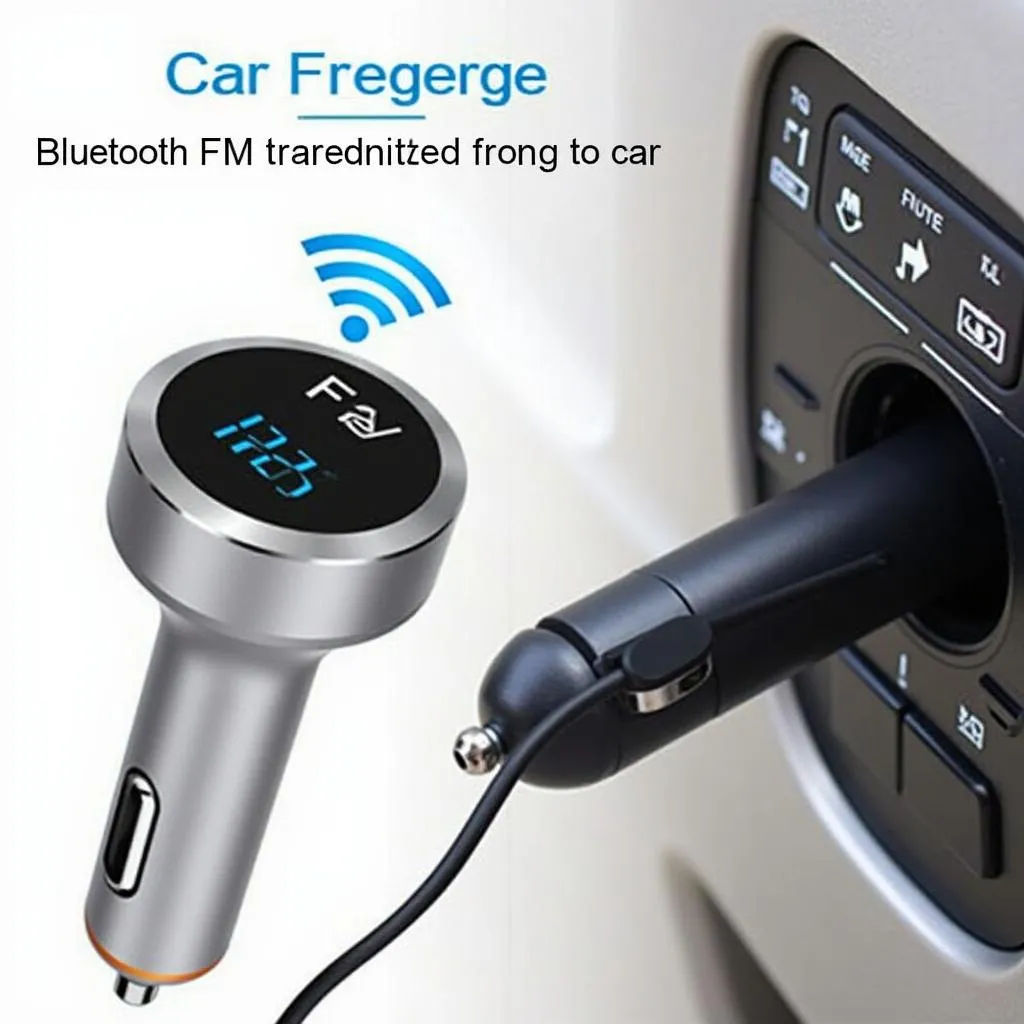A dead car battery is a frustrating experience, especially when you’re in a hurry. Understanding the causes of a battery discharge problem in car can help you avoid this inconvenience and keep your vehicle running smoothly. This comprehensive guide will delve into the common reasons for car battery drain, diagnostic procedures, and effective solutions, including remote software programming and installation options.
Common Causes of Battery Discharge Problems
Several factors contribute to battery discharge problems in car, ranging from simple user errors to more complex mechanical or electrical issues.
Leaving Lights On
One of the most frequent causes of a dead battery is accidentally leaving the headlights, interior lights, or even the trunk light on. This drains the battery overnight, leaving you stranded in the morning.
Parasitic Drain
Even when your car is off, certain electrical components continue to draw power, resulting in a parasitic drain. This can be caused by faulty wiring, malfunctioning modules, or even aftermarket accessories like alarms and stereos.
Extreme Temperatures
Both extreme heat and cold can negatively impact battery performance. High temperatures can accelerate the chemical reactions within the battery, leading to faster discharge. Conversely, cold weather can thicken the battery’s electrolyte, reducing its ability to hold a charge.
 Car Battery Affected by Extreme Cold
Car Battery Affected by Extreme Cold
Old or Faulty Battery
Like any other component, car batteries have a limited lifespan. As a battery ages, its ability to hold a charge diminishes, eventually leading to discharge problems. A faulty battery can also experience internal short circuits, resulting in rapid power loss.
Alternator Issues
The alternator is responsible for recharging the battery while the engine is running. A malfunctioning alternator will fail to replenish the battery’s charge, leading to eventual discharge and potentially leaving you stranded.
Diagnosing a Battery Discharge Problem
Identifying the root cause of a battery discharge problem requires systematic troubleshooting.
Visual Inspection
Start by visually inspecting the battery for any signs of damage, corrosion, or loose connections. Check the battery terminals for a buildup of white or greenish residue, which can hinder proper electrical contact.
Battery Testing
Using a multimeter or a dedicated battery tester, measure the battery’s voltage. A fully charged battery should read around 12.6 volts. A lower reading indicates a discharged battery. Further testing can assess the battery’s capacity and overall health.
Parasitic Drain Test
To detect a parasitic drain, disconnect the negative battery cable and connect an ammeter in series. A reading higher than a few milliamps indicates an excessive current draw, suggesting a parasitic drain.
Alternator Testing
The alternator’s output voltage can be checked with a multimeter while the engine is running. A healthy alternator should produce around 13.5 to 14.5 volts. A lower or fluctuating reading suggests a potential alternator problem.
Solutions and Remote Software Options
Addressing a battery discharge problem involves various solutions, including traditional repairs and advanced remote software options.
Battery Replacement
If the battery is old, faulty, or unable to hold a charge, replacement is often the most straightforward solution.
Alternator Repair or Replacement
A malfunctioning alternator needs to be repaired or replaced to ensure the battery is properly recharged.
Addressing Parasitic Drain
Identifying and eliminating the source of a parasitic drain requires careful inspection of electrical circuits and components. This may involve repairing faulty wiring, replacing malfunctioning modules, or disconnecting aftermarket accessories.
Remote Diagnostics and Software Programming
Modern vehicles are increasingly reliant on software and electronic control units (ECUs). Remote diagnostics and software programming can identify and rectify software-related battery discharge issues.
Remote Software Installation
In some cases, software updates or installations may be necessary to address specific battery management issues. Remote software installation allows for convenient and efficient updates without requiring a physical visit to a service center.
Conclusion
Dealing with a battery discharge problem in car can be a hassle. By understanding the common causes, diagnostic procedures, and available solutions, you can effectively address the issue and keep your vehicle on the road. Remote software diagnostics, programming, and installation are increasingly valuable tools for resolving modern automotive electrical problems, providing convenient and efficient solutions for car owners.
FAQ
-
How often should I replace my car battery? Car batteries typically last 3-5 years, but various factors like climate and driving habits can influence their lifespan.
-
Can I jump-start my car if the battery is discharged? Yes, you can jump-start your car using jumper cables and another vehicle’s battery. However, it’s important to follow proper procedures to avoid damage.
-
What is a deep cycle battery? A deep cycle battery is designed to be repeatedly discharged and recharged, making them suitable for applications like powering accessories in RVs or boats.
-
How can I prevent battery discharge problems? Regularly checking your battery’s health, ensuring lights are turned off, and minimizing parasitic drain can help prevent battery discharge problems.
-
What are the signs of a failing alternator? Dimming headlights, flickering interior lights, and unusual noises from the engine compartment can indicate a failing alternator.
-
Is it safe to drive with a bad alternator? Driving with a bad alternator can eventually lead to a complete battery discharge, leaving you stranded. It’s recommended to address alternator issues promptly.
-
Can remote software solutions fix all battery discharge problems? While remote software can address software-related battery issues, physical problems like a faulty alternator or a dead battery will require traditional repairs or replacements.

